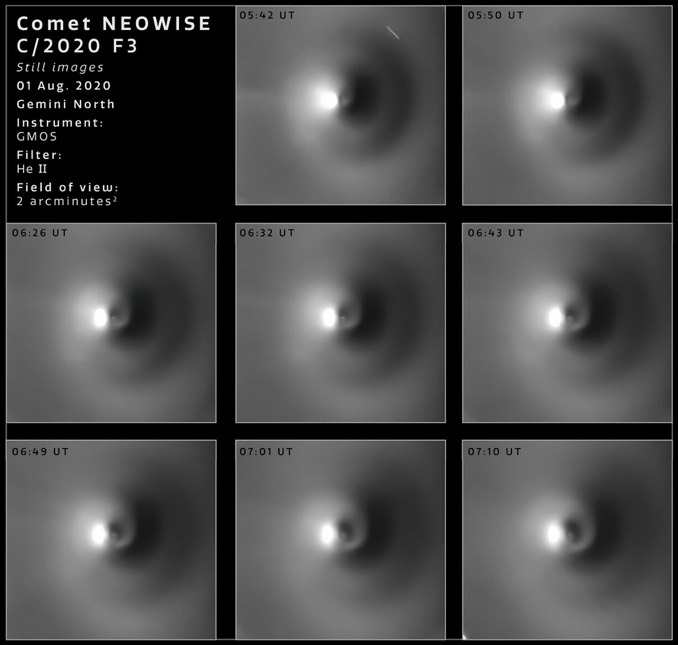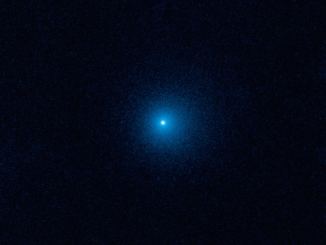
While amateur astronomers around the world captured stunning wide-angle views of Comet NEOWISE (C/2020 F3) as it passed through the inner solar system, researchers using the 8.1-metre Gemini North telescope in Hawaii were able to zoom in, capturing images of a spiralling stream of molecular gas that revealed the comet’s rotation.
The close-up observations, led by Michal Drahus and Piotr Guzik of Jagiellonian University in Krakow, were carried out under a program to study the rotational dynamics of the comet. Despite limitations imposed by the comet’s proximity to the Sun, the researchers were able to confirm a 7.5-hour rotation period by measuring the spiral outflow of molecular gas as NEOWISE spun about.
Eight images collected on 1 August were assembled into a time-lapse movie by International Gemini Observatory/NOIRLab/NSF/AURA/M. Drahus/P. Guzik/J. Pollard:
“It is thought that most comets release gasses in geyser-like jets and that is what researchers think is happening in the Gemini images,” the National Science Foundation’s NOIRLab said in a description.
“As the vaporised material erupts from the comet its rotation causes it to appear to spiral outward, much like the water from a spinning garden hose. The very same material impacts the comet’s rotation causing its nucleus to spin-up or spin-down, though for most comets, the effect is too weak to detect.”



